|
|
| |
|
 Musings from the Edge of Forever
Musings from the Edge of Forever
Note: This blog expresses only the opinions of the blog owner,
and does not represent the opinion of any organization or blog
that is associated with RONIN ON EMPTY.
|
|
August 21st, 2009
Recently, Kozo weighed in on his thoughts on Lee Byung-Hun’s (LBH!) appearance in the new GI:JOE movie, as well as other Asian actors like Rain playing ninjas in Hollywood productions. With that in mind, I thought I’d share my two cents about the movie and LBH’s performance, among other things.
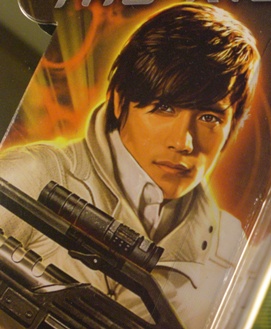
At least I get to show my face, take that Ray Park!
First of all, I cannot emphasize enough that GI:JOE is a ridiculous, cheesy, and over-the-top movie. I thought it was okay, and for the most part, I could suppress my skepticism and “just go with it,” that is until the Joes decided to storm Destro’s unbelievably intricate and impossible-to-exist underwater base. At that moment, I couldn’t help but roll my eyes. Even if I were ten, I’m pretty sure I would think it looked lame (BTW: District 9 was made with probably a quarter of the money this movie was made, and it’s effects look photo-real. Go see it. It’s great).
Read the rest of this entry »
Posted in GI:JOE, Lee Byung-Hun | 2 Comments »
August 5th, 2009
During my summer holiday in Hawai’i, I finally had some Asian cinema-related experiences, so voila! Here’s a new blog post! Enjoy!
Blast from the Past
Hong Kong cinema fans might be amused to know that, while visiting my girlfriend’s parents’ house, I saw Maggie Q’s 11th grade photo in an old Mililani High School Yearbook. To be fair to Ms. Quigley, I won’t reproduce the image here, but let’s just say that even one of the prettiest actresses around can look a little dorky in her yearbook photo. To be fair, she actually looks pretty cute, but there’s absolutely no hint of the sex symbol/Maxim covergirl/male fantasy she was to become. There’s no hint of that in my yearbook photo either.

“If you publish that yearbook pic, I’ll make you watch Gen Y Cops…”
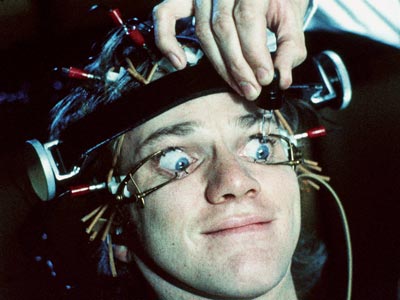
“…LIKE THIS!”
But this isn’t going to be a post about embarrassing yearbook photos. No, this entry is actually about “translation,” although I doubt I’ll get too deep about it. It’s more like, “Hey, isn’t that an interesting coincidence?” To explain, I should say that I recently saw three films, all of which deal with translation in varying degrees.
DETROIT METAL CITY
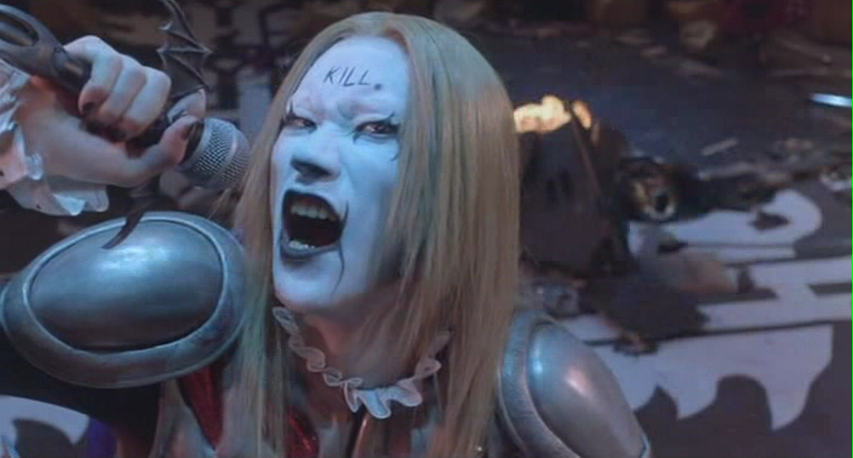
“Thank you, Rocklahoma!”
First up is Detroit Metal City,a 2008 Japanese film that translates the popular (and utterly profane) death metal manga to the big screen…with mixed results. Smartly, the film adapts the first volume of the manga (with elements from later stories) and turns what essentially played out in a purely episodic fashion into a clearly structured, easy-to-understand character arc. So far so good.
Since Kevin has already reviewed the film, I won’t go into too much detail about the plot. But basically, the premise of the film involves Negishi, a young kid from the Japanese countryside who leads a dual life — by day, he’s a dork with a mushroom haircut and aspirations to sing saccharine sweet love songs, but by night, he’s Krauser II — the lead singer of the death metal band, Detroit Metal City (or Detoroito Metaru Shiti for you Japanese folks. Yes, I said, “shiti.”). Not only does Krauser wears KISS-style makeup and body armor, but he also sings about such heartwarming subjects as rape and murder. As is, that dichotomy within a single character is tough to pull off, but somehow the manga succeeds in allowing you to believe that a geek like Negishi could actually channel his repressed demons into such a charismatic frontman.
On film, however, such a transformation would require a Christopher Reeve-level performance to get audiences to believe that one guy could really be these two different characters — and not just because it says so in the script. I have to say that Kenichi Matsuyama isn’t up to the task. Don’t get me wrong, he’s masterful as Krauser II — especially in the character’s silly, unguarded moments.
But when he’s Negishi, it’s as if neither Matsuyama, nor the director ever read the manga. Even worse, it’s as if neither of them have any idea how real dorks act in public. In the manga, Negishi is a meek guy, but he’s an everyman. Of course, any manga that’s based on dual identities, embarrassing misunderstandings, and increasingly awkward situations requires a bit of mugging, doubletakes, etc. But in the comic, no one is ever really privy to Negishi’s Looney Tunes-style facial contortions, which — now that I’ve taken a second look at the manga — are actually pretty rare. Yet Matsuyama insists on playing Negishi as if he were a) socially retarded, b) a quasi-gay stereotype, and c) a manic weirdo who would freak out just about anybody if you actually had to carry on a conversation with him. Just look at these pictures:
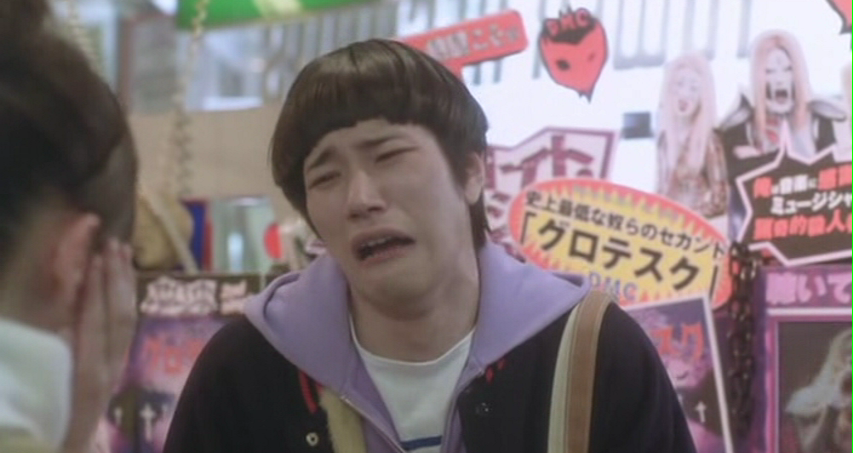
“Why did they have to kill off L?”
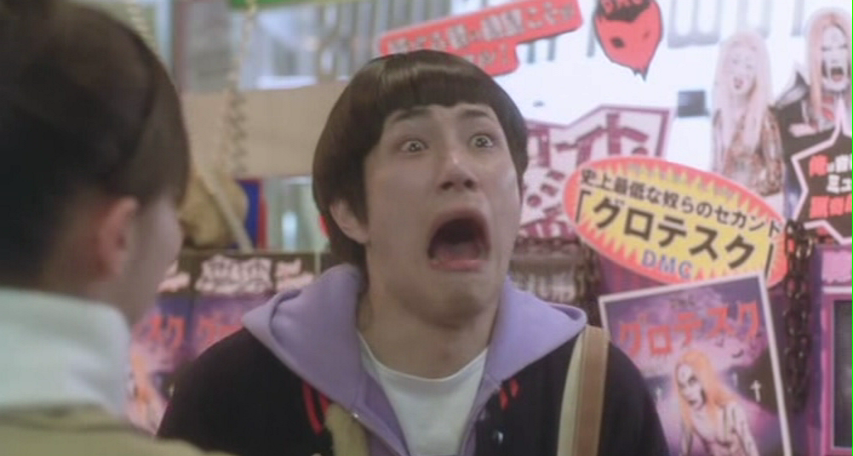
“Look, I’m acting!”
In real life, Rosa Kato’s character (and the rest of the supporting cast) would say, “What the $%^& is wrong with you?” Or walk away. Or run. I couldn’t for one minute believe that Rosa Kato’s character would actually fall for this guy. He’s supposed to be an everyman, but the identification-level here is practically nonexistent. You can only feel sorry for the guy. In that sense, Matsuyama’s performance is a terrible translation of the manga. On the bright side, it does include the funniest part of the original manga, too, which unfortunately isn’t on Youtube. Here’s a preview:

“Thank God, I’m a Country Boy!”
Still, it’s a funny movie, with half a brilliant performance, half a grating one, and a kind of lackluster ending. The woman playing Negishi’s mom is pretty funny though.
THE GOOD, THE BAD, AND THE WEIRD
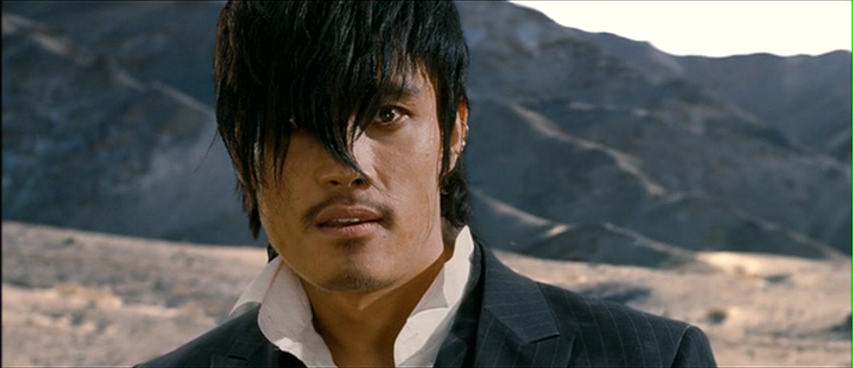
”So we meet again, Snake Eyes”
The second film I watched was The Good, the Bad, the Weird, which translates the Western — specifically the Sergio Leone-style Spaghetti Western — to a Korean (actually Manchurian) locale. I’m planning to write a full-length review of the film (I’m surprised no one has, although Kozo’s alter-ego Koh So seems to have done so. I’m not sure what to make of an alter ego has an alter ego!), so I’ll keep my comments short. First off, it’s a great film, effectively mimicking the style of Sergio Leone, while bringing something new to the table at each turn. Bravura cinema at its finest. My only complaints involve the lack of emphasis on “The Good” and a lackluster final standoff that only looks like Leone, but feels kind of hollow, as does the film’s ultimate outcome.
RAMEN GIRL
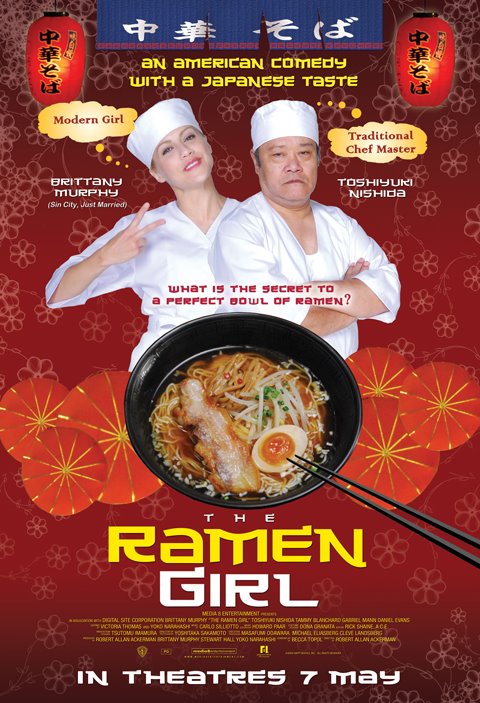
How does this movie exist?
Sometimes a film slips through the cracks — like, say a Matthew McConaughey/Kate Beckinsdale/Gary Oldman film about dwarfism — and Ramen Girl is just such a film. The kind you never heard of, never saw any previews of, and are surprised as hell when you see it at Blockbuster.
Ramen Girl deals with an entirely different kind of translation than the previous films. A US-Japan co-production featuring an American star, an American director, Japanese cast and crew, and a Korean leading man who was raised in Japan. Brittany Murphy stars as an American stranded in Japan who befriends a ramen chef (Toshiyuki Nishida), who begrudgingly becomes her mentor — even though they don’t speak each others language. That fact requires a HUGE suspension of disbelief regarding pretty much everything that happens in the film. On the bright side, I have to give kudos to the filmmakers for including a Korean male character (Park Sohee), who is intelligent, handsome, and actually sexual, which makes him the rare exception when it comes to the decidedly non-sexual Asian male/white female romantic pairings in mainstream Hollywood cinema (I’m looking at you, Jackie Chan). Ultimately, I have acknowledge that this isn’t some magnificent film about cross-cultural understanding, but the Japanese actors are pretty amusing and the film is innocuously cute.
Perhaps to secure a PG-13 rating for Blockbuster, the American DVD contains a significant amount of looping to edit out all the “shits,” fucks,” and what have you, which does a lot to undermine the emotion in these scenes. In fact, if you watch the deleted scenes on the DVD, you’ll find that most of the good parts of the movie were left on the cutting room floor. Granted, some of the footage feels a bit like outtakes of an ad for Japanese tourism, but ultimately, a lot of the excised bits involve some really nice character stuff, important exposition (How the hell does she afford that apartment?), and various little touches that would have given the film more depth and texture. As is, it’s just a cute, but wholly forgettable date movie.
Oh, and what is up with this American packaging?
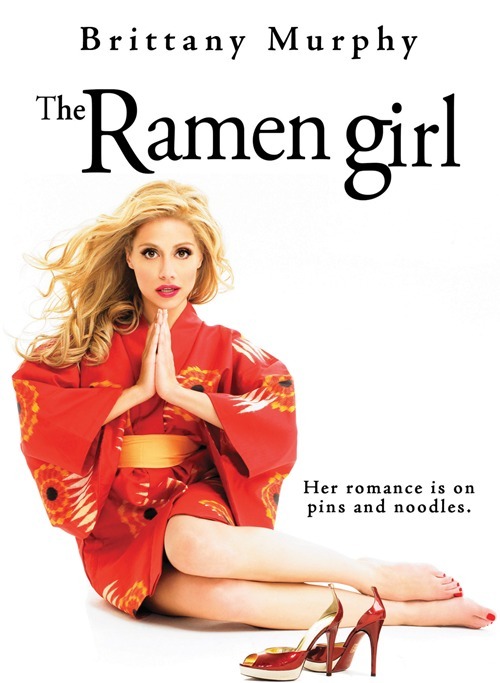
Next time: Daniel Henney in My Father…and, um, other stuff.
Posted in Maggie Q, Manga, Korean cinema, Japanese cinema | 1 Comment »
July 11th, 2009
On some level, I knew this would happen. And by “this” I’m specifically referring to my steadily declining output for this wonderful website. Every time I check the main page for updates, I find the blogroll mocking me on a daily basis, reminding me that I haven’t updated this blog in close to two months. And so, I sincerely apologize to you few, you happy few who actually take the time out of your day to read my stuff. Thanks a million for your support. But I have to tell you, my hiatus from blogging was not without good reason.
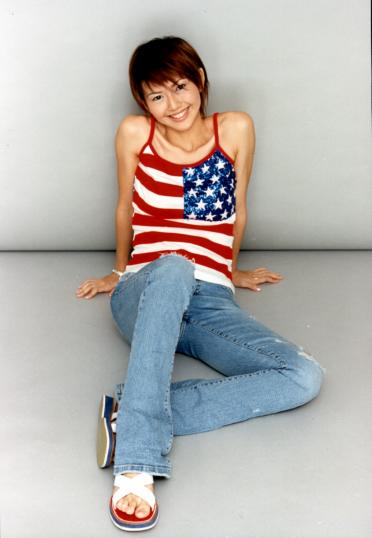
To make up for Sanjuro’s two month blogging hiatus, Singapore’s very own Stefanie Sun wishes LoveHKFilm.com readers in the U.S. a belated Happy 4th of July!
For one, I’m in a PhD program. My areas of interest are 20th century American literature, Asian American literature and film, hard-boiled detective fiction, and American film noir. I’m taking my qualifying exam in the fall, so that basically means I’ve been spending the last several months of my life and will be spending the next several months studying my ass off for what I am certain will be the hardest final exam I have ever taken in my life — which, by the way, has a timed written component as well as an oral one in front of a wizened council of elders. In my worst nightmares, I imagine it looks something like this:

GUILTY!
So to make a long story short, the last few months and the next few months for me means reading a lot of fiction and a lot of critical theory, as well as watching a lot of films that don’t have anything remotely to do with Hong Kong cinema.
Read the rest of this entry »
Posted in Singapore, Ekin Cheng, Hong Kong cinema | 4 Comments »
May 12th, 2009
* * *
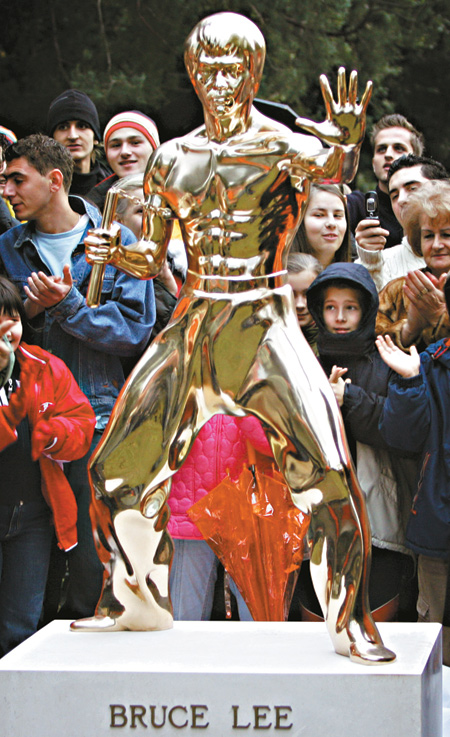
Absorb what is useful, discard what is useless, add what is uniquely your own.
— Bruce Lee
On November 27th, 2005, a monument in honor of Bruce Lee was erected at the Avenue of Stars, a Hong Kong tourist attraction located at the Tsimshatsui Promenade along the Victoria Harbor waterfront. Modeled after the Hollywood Walk of Fame and created, according to its official website, “to pay tribute to outstanding professionals of [the] Hong Kong’s film industry, to promote [the] tourism industry, and to consolidate Hong Kong’s position as Asia’s World City,” the Avenue of Stars was, quite possibly, the ideal location to unveil a 2.5-meter tall, 600 kg bronze statue honoring the industry’s all-time biggest star. The inscription at the base of the statue says it all: “Bruce Lee: Star of the Century.” The tribute, however, was a long time in coming. When repeated attempts to urge the government to find a way to pay homage to Bruce Lee stalled, members of the locally based Bruce Lee Club took it upon themselves to raise upwards of US $100,000 to commission a sculpture. This long-awaited tribute finally occurred on what would have been the martial arts superstar’s 65th birthday had he not died in 1973. The fact that it took over thirty years to create a public monument in honor of Bruce Lee in Hong Kong is—to say the least—peculiar, considering the actor’s enduring fame. What is perhaps even more peculiar is that another country had already beaten Hong Kong to it—and in Bosnia and Herzegovina, no less.
Only a day before the unveiling of the statue in Hong Kong, the city of Mostar in Bosnia and Herzegovina unveiled a similar statue of Bruce Lee, making it the first public monument in the world to the international icon. This gold-plated bronze statue captures Lee in a familiar action pose –left arm raised with his palm facing outward, while his right hand grips his signature weapon, a pair of nunchaku.
At first glance, a Bruce Lee statue in Hong Kong makes a bit more sense than it does in Mostar. After all, the ethnically Chinese Bruce Lee was raised in Hong Kong and found international superstardom via the local film industry. Bruce Lee’s rooted and routed connection to Hong Kong is well-documented, but the actor has no evident tie to Bosnia and Herzegovina. What, then, was the rationale behind the Mostar officials’ seemingly incongruous choice of Bruce Lee as a local icon? The city was ravaged by bitter, bloody conflicts amongst rival ethnic factions during the Bosnian War of 1992-1995. According to Alexander Zaitchik, the creators of the monument viewed it as a “sly rebuke to the ongoing use of public spaces to glorify the country’s competing nationalisms.” Bruce Lee, then, was chosen as a symbol of solidarity meant to cross these divisive ethnic borderlands. “We will always be Muslims, Serbs or Croats,” one of the organizers remarked to the BBC, “But one thing we all have in common is Bruce Lee.”
This statement—absurd to some, perhaps inspiring to others—confirms much of what Jachinson Chan has already said about the world famous martial artist in his 2001 book, Chinese American Masculinities: From Fu Manchu to Bruce Lee. He writes, “Bruce Lee’s popularity crosses cultural boundaries in terms of race, class, gender, sexuality, and nationality. He was an international hero” (74). And he still is, if the statue in Mostar is any indication. Bruce Lee, the man, may have been snuffed out in the prime of his life, but his image, if not his “spirit” endures. In Hong Kong alone, numerous pretenders-to-the-throne with stage names like Bruce Le, Bruce Li, and Dragon Lee sought to fill the void in the wake of Lee’s death, starring in dozens of unofficial sequels, heartfelt homages, and crass attempts to cash-in on Lee’s popularity, each bearing titles like Exit the Dragon, Enter the Tiger (1976), Clones of Bruce Lee (1977), and Bruce Lee Fights back from the Grave (1976). So prolific were these films that many casual viewers who believe they have seen a Bruce Lee film in their lifetime may likely have only seen one of these pale imitations. Lee’s “absent presence” even had a strong affect on his contemporaries and successors. Even future superstar Jackie Chan found himself pressured in his early films to imitate Lee’s persona before finding his niche as a more comedic, Buster Keatonesque kung fu star. Further, Lee’s impact on martial arts cinema internationally was so dramatic that it would be impossible to elaborate upon it here. Despite being known for only a handful of films, Bruce Lee has gained enough recognition to be chosen as one of Time’s “100 Heroes and Icons of the Twentieth Century” alongside such figures as Che Guevara, Harvey Milk, and Mother Teresa. This recent honor speaks directly to the man’s prolific afterlife in the realm of cinema, DVDs, books, video games, t-shirts, posters, and numerous other cultural artifacts. As Stephan Hammond and Mike Wilkins write, “What Elvis Presley was to rock ‘n’ roll, Bruce Lee was to celluloid kung fu” (204). So popular is Bruce Lee that one need not to have ever seen a Bruce Lee film to be familiar with who he is.
In the succeeding paragraphs, I will examine Bruce Lee—the man, the myth, the legend—through the prism of articulation and multi-accentuality. Why would a city in Bosnia and Herzegovina erect a statue of Bruce Lee? And how does it differ from the reasons for having one in Hong Kong? Does it differ at all? In other words, how could a national and ethnic icon for one group be a post-national and post-ethnic icon for others? In the essay, I will propose a way in which we can view these two monuments as direct evidence of Bruce Lee as an articulated and multi-accentual cultural figure.
Read the rest of this entry »
Posted in Bruce Lee | 7 Comments »
May 1st, 2009
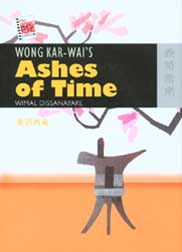 
When I was attending the University of Hawai’i at Manoa, I did a keyword search of “Wong Kar-Wai,” and amongst the results, I was directed to a couple of HK cinema-related books that I had no idea existed. One was a booklength study of Ashes of Time by Wimal Dissanayake; the other was an equally extensive look at Happy Together by Jeremy Tambling. Both were extremely well-written, illuminating, and full of little known facts about the films. The idea that this would be an ongoing series was an exciting prospect for a Hong Kong cinema fan such as I.
When I visited Hong Kong a few years back, I picked up a copy of Karen Fang’s informative look at A Better Tomorrow at one of the museum gift shops, and just recently, I finished reading Gina Marchetti’s take on the Infernal Affairs Trilogy. She does a heckuva job keeping everything that goes on in the trilogy straight, teasing out the implications of new, seemingly contradictory information we receive in the two sequels. To date, these are the covers of all the books in the series, save Lisa Oldham-Stokes’ He’s a Woman, She’s a Man and Tony Williams’ A Bullet in the Head, which aren’t coming out until May.
Read the rest of this entry »
Posted in Books, Hong Kong cinema | 15 Comments »
April 23rd, 2009
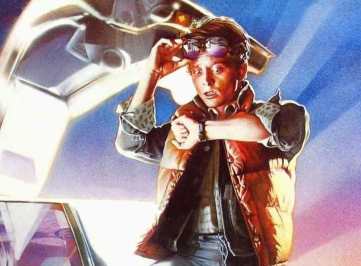
[Every once in a while, I’ll take a trip down memory lane to spotlight an important, interesting, or just plain peculiar historical moment in Hong Kong cinema history. This will be the first. Hope you enjoy ‘em]
Do you remember when Hollywood finally got hip to Hong Kong action? In the aftermath of the Yuen Woo-Ping choreographed fight scenes in The Matrix (1999) and Crouching Tiger, Hidden Dragon (2000), Hollywood producers began importing Hong Kong action directors with increased frequency for at least the next three years. Yuen returned for the two Matrix sequels as well as the two volumes of Quentin Tarantino’s saga. His brother, Yuen Cheung-Yan handled the action choreography in Kill BillCharlie’s Angels (2000), Daredevil (2003), and Charlie’s Angels 2: Full Throttle (2003). Corey Yuen-Kwai, who actually got a head start* in Jet Li’s American debut, 1998’s Lethal Weapon 4, which was soon to be followed by his participation with Romeo Must Die (2000), X-Men (2000), Kiss of the Dragon (2001), The Transporter (2001) and its sequel, and a personal guilty pleasure, Cradle 2 The Grave (2003).**
If you’re a Hong Kong cinema fan, you’ve probably heard of, if not actually seen, all of these films. But there’s at least one title missing from the millennial “Hong Kong action director” boom. Does anyone remember The Musketeer back in 2001? That title might ring a bell with some of you, but I’m not sure everyone will remember its Hong Kong connection.
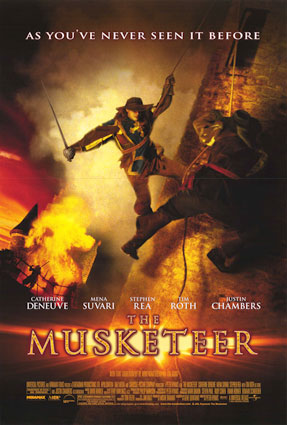
Okay, here’s the scoop. When approached to direct The Musketeer, Peter Hyams (2010, Timecop) was not at all keen on helming the picture – that is, until he came upon the idea of melding Hong Kong wirework with old fashioned Hollywood swashbuckling might actually make the project more interesting – not only to himself, but to the film-going audience as well. For reasons I haven’t been able to determine, Hyams hired none other than Xiong Xin-Xin (most famous as Club Foot in the latter half of the Once Upon a Time in China series) to be the film’s action director. Xiong reportedly spent something like a year thinking up the action setpieces in collaboration with Peter Hyams.
Read the rest of this entry »
Posted in Xiong Xin-Xin | 2 Comments »
April 16th, 2009
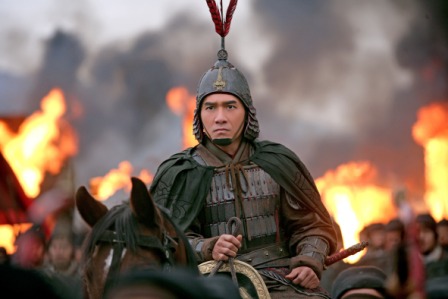
In the early press releases for John Woo’s Red Cliff, it was announced that the film would be split in half for Asian audiences. Part I was almost two-and-a-half hours long, while Part II was only slightly shorter than that. With the split-release of Kill Bill already well behind us, this announcement was certainly nothing new, and I’m sure most John Woo fans were glad that he wouldn’t have to compromise his vision by cutting his film to fit a conventional theatrical running time. However, that wasn’t the only announcement that was made in regard to the film’s release. It was also mentioned that there would be an American version of the film, one that would run only two-and-a-half hours total. For purists, this probably seemed heretical, and for the rest of us, it just seemed odd. How can you squeeze over four hours of story into a movie that’s only a little over half its original running time?
Well, while watching the first installment of Red Cliff I became convinced that it could be done. Later, I watched Red Cliff II and started to have other ideas, but whatever my reservations, I’ll transcribe my thoughts on how to rework the first installment for your amusement.
Read the rest of this entry »
Posted in Takeshi Kaneshiro, Tony Leung Chiu-Wai, John Woo, Red Cliff | 10 Comments »
|
|
|
| |
| |
|
|
|
|
|
|
|
|
|
|
|
|
|
|
|
|
|
|
|
|
|
|
|
|
|
|
|
|
|
|
|
|
|
|
|
|
|
|
|
|
|
|
|
|
|
|
|
|
|
|
|
| LoveHKFilm.com
Copyright © 2002-2025 Ross Chen |
|
|


















